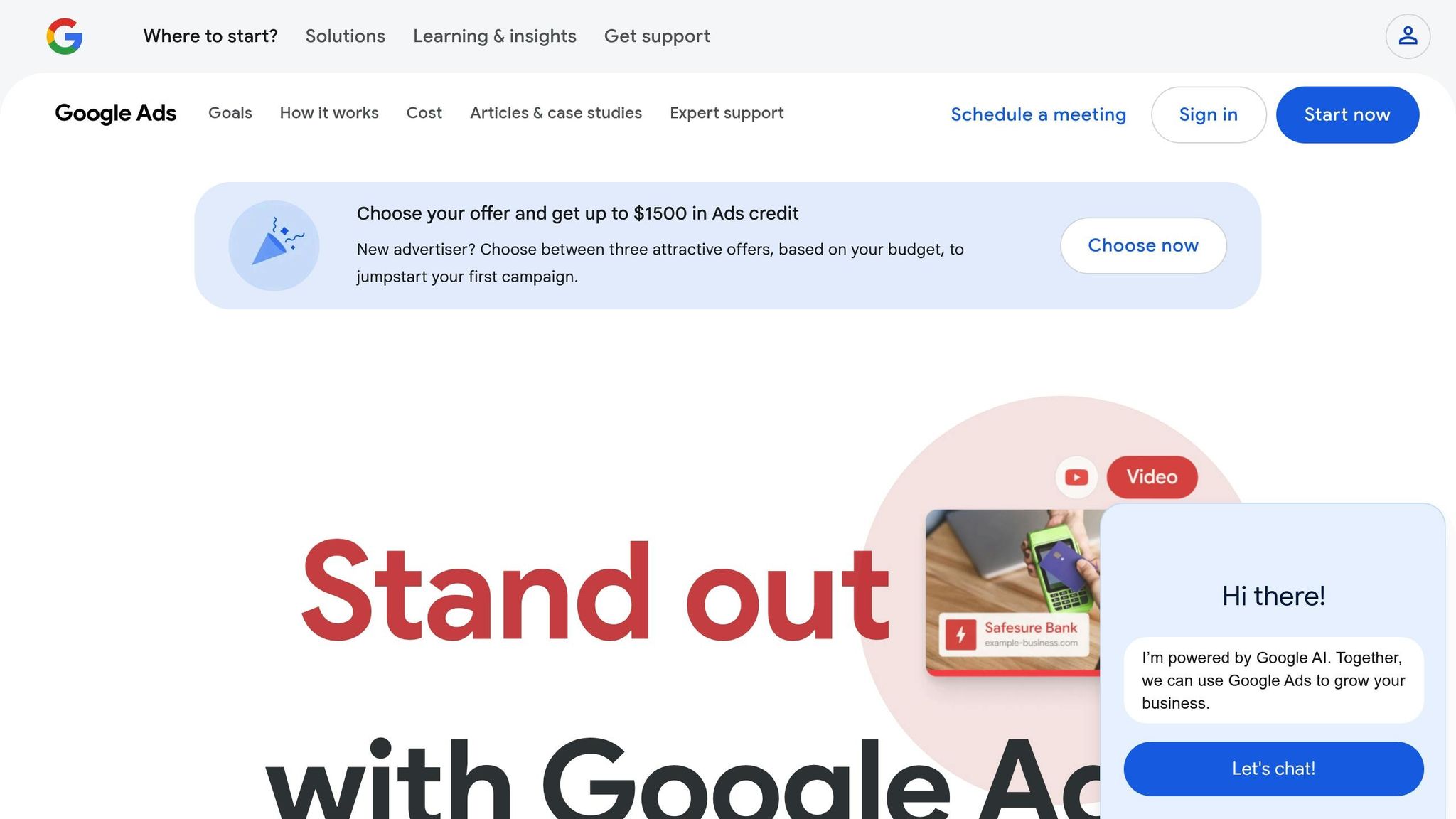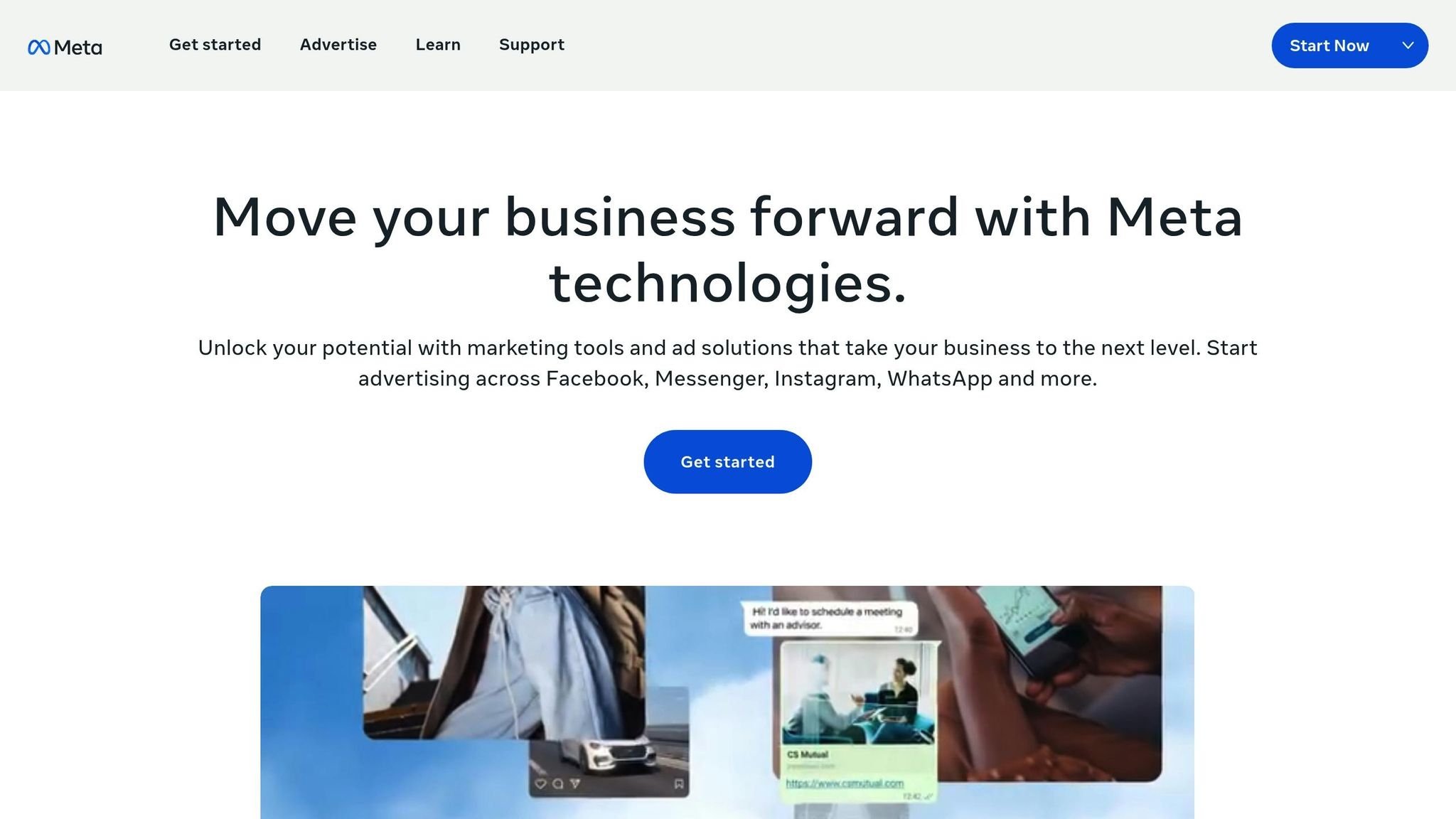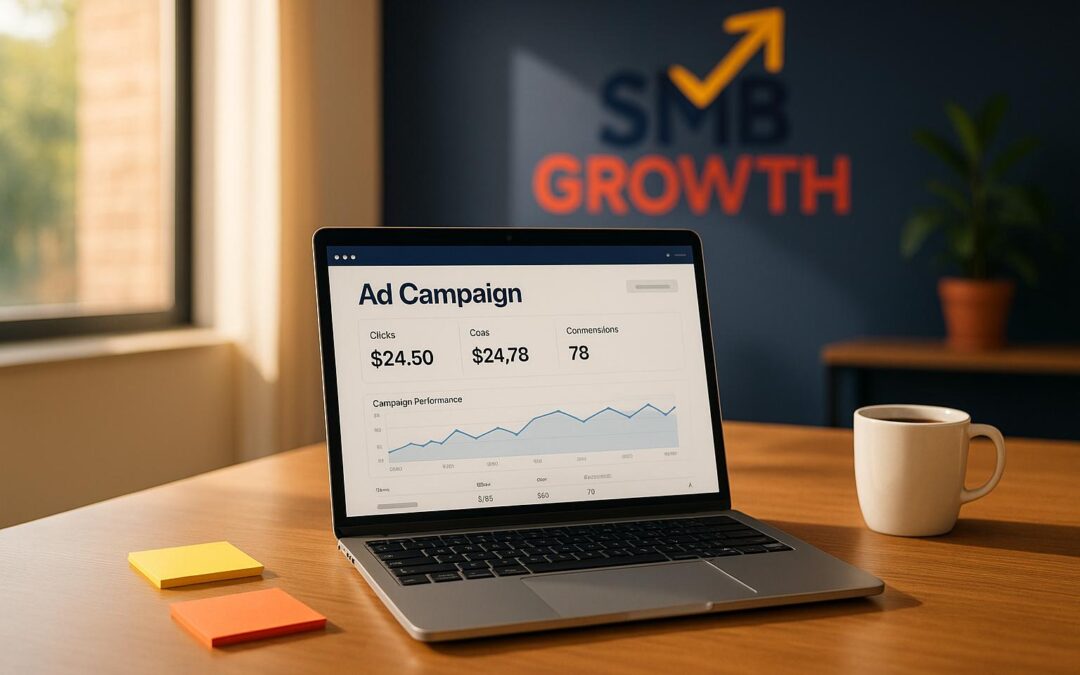- Google Ads: Target customers actively searching for your products or services with precise keywords and optimized landing pages.
- Meta Ads: Use Facebook and Instagram to reach specific audiences based on demographics, interests, and behaviors.
- Display Ads & Remarketing: Build brand visibility and reconnect with website visitors for higher conversions.
- AI-Powered Ads: Leverage machine learning tools for smarter audience targeting, budget allocation, and ad testing.
- Local Ads: Focus on geo-targeting to connect with nearby customers and tailor ads to local preferences.
Key Takeaways:
- Combine tools like CRM systems and analytics for better results.
- Train your sales team to convert leads effectively.
- Monitor metrics like ROI, CTR, and CPA to refine campaigns.
Paid ads work best when integrated across platforms with clear goals and consistent tracking. Start small, measure results, and scale as you see success.
053. Creating a Multi-Channel Paid Media Strategy for B2B …
1. Google Ads and Search Marketing

Google Ads plays a crucial role in driving leads and business growth. It connects companies with potential customers who are actively searching for products or services, making it a powerful tool for precise targeting.
Reaching the Right Audience at the Right Time
One of Google Ads’ biggest strengths is its ability to target specific keywords. This means your business can show up exactly when someone is searching for what you offer, helping you make the most of your advertising dollars. For instance, a lawn care company could focus on seasonal keywords to attract homeowners during peak times for yard maintenance.
Steps to a Successful Campaign
Running an effective Google Ads campaign takes thoughtful planning. Here are some key elements to consider:
- Keyword Research: Choose keywords that reflect customer intent and match your business goals.
- Ad Copy: Write clear and engaging ads that address your audience’s needs directly.
- Landing Pages: Make sure your landing pages align with your ads and encourage conversions.
- Budget Oversight: Set spending limits and track your return on investment consistently.
Boosting Results with Integrations
Google Ads becomes even more effective when paired with other tools. Consider connecting it with:
- CRM systems to track leads and measure sales team performance
- Analytics platforms to monitor campaign success
- Tools for calculating ROI
The goal is to ensure your ads target the right people in the right place at the right time. This approach makes every dollar work harder for your business.
2. Meta Ads and Social Platforms

Meta Ads give small and medium-sized businesses (SMBs) the tools to reach more people and grow their customer base. By leveraging Facebook, Instagram, and other Meta platforms, businesses can connect with the right audience using highly specific targeting options.
How Meta Ads Target Audiences
With Meta Ads, SMBs can pinpoint their audience based on:
- Demographics: Factors like age and location
- Interests: Hobbies, preferences, and activities
- Behaviors: Online habits and shopping patterns
These options allow businesses to cut through the noise and focus on generating consistent leads in a competitive market.
3. Display Ads and Remarketing
After launching targeted search and social campaigns, display ads and remarketing can help strengthen your digital strategy.
These tools are great for increasing brand visibility and reconnecting with potential customers at different stages of their buying process.
Display ads rely on eye-catching visuals to grab attention across websites, apps, and social platforms. For small and medium-sized businesses (SMBs), placing these ads on platforms their audience frequently visits can help build brand awareness. The key is combining appealing designs with a clear call-to-action to encourage interaction.
Remarketing focuses on reconnecting with people who have already visited your website. By targeting these warm leads, you can drive better results – some well-planned campaigns have been shown to deliver up to a 10x return on investment.
To ensure your campaigns perform well, keep an eye on metrics like impression share, click-through rate (CTR), cost per acquisition (CPA), conversion value, and return on ad spend (ROAS). These indicators can help you fine-tune your approach and maximize results.
sbb-itb-8d6282e
4. Machine Learning Ad Tools
Machine learning is reshaping advertising for small and medium-sized businesses (SMBs) by automating decisions and offering insights from complex data.
By enhancing targeted search and social campaigns, machine learning improves ad performance through smart automation. For instance, Smart Bidding Strategies use artificial intelligence to adjust bids in real time. These adjustments are based on factors like device type, location, time of day, and user behavior – making precise changes that would be impossible to manage manually.
Key Areas of Performance Improvement
Machine learning focuses on three main aspects to improve ad campaigns:
- Audience Targeting: AI identifies and prioritizes the most valuable audiences.
- Budget Allocation: Automated tools distribute your budget to maximize returns.
- Ad Creative Testing: Machine learning evaluates different ad versions to find the best-performing options.
These methods integrate seamlessly with overall campaign management, strengthening every part of your paid advertising strategy.
For example, Suntek Lawn Care used AI-powered CRM and ad management tools to achieve a major increase in sales.
"Excellent agency, they don’t only manage my ads but help me to build up my CRM and train my sales team to use it."
– Flavio Torres, Suntek Lawn Care
Tips for Getting the Most Out of AI Tools
To make the most of machine learning in advertising, consider these best practices:
- Start with automated bidding strategies before trying advanced AI tools.
- Regularly track your key performance indicators (KPIs).
- Combine AI-driven insights with human expertise for better decision-making.
- Prioritize high-return opportunities identified through AI analysis.
"More than a simple agency, CS Digitall know how to bring the results, we hired 3 agencies before but nothing like them."
– Jessica, Excellence Remodeling
While automation can boost efficiency, SMBs should maintain a balance between AI and human oversight. Success depends on having clear business goals and consistently monitoring campaign performance.
5. Local Area Ad Campaigns
Local area ad campaigns are designed to connect small and medium-sized businesses (SMBs) with nearby customers through precise geo-targeting. These campaigns use automated strategies to focus on specific locations, making it easier to reach the right audience at the right time.
Geo-targeting customizes your ads based on location. For example, a lawn care service might target homeowners in nearby neighborhoods by combining location data with factors like:
- Seasonal trends
- Local search habits
- Neighborhood demographics
- Community events or needs
This targeted approach helps businesses:
- Cut unnecessary ad spending
- Boost conversion rates by reaching the right audience
- Strengthen their presence within the local community
- Tailor messaging to fit local preferences and interests
Conclusion
These strategies provide the foundation for a successful paid ad campaign, offering small and medium-sized businesses (SMBs) a pathway to grow effectively through paid advertising.
Budget Management and ROI Tracking
Managing your budget wisely is essential. Keep a close eye on metrics and adjust your approach as needed to ensure your campaign delivers the best return on investment (ROI).
Channel Integration
Your advertising efforts should work together seamlessly. Using multiple channels in harmony can help you reach more people and keep them engaged throughout their buying journey.
Tools and Team Training
Use reliable CRM systems to handle leads effectively. Equally important, ensure your sales team is well-prepared to convert those leads into customers.
Mistakes to Watch Out For
- Running campaigns without clear goals
- Neglecting to monitor performance metrics
- Ignoring the need to refine strategies based on data
- Forgetting to equip your sales team for success
"More than a simple agency, CS Digitall know how to bring the results, we hired 3 agencies before but nothing like them."
- Jessica, Excellence Remodeling
FAQs
How can small and medium-sized businesses use CRM systems to enhance their paid ad strategies and boost ROI?
Integrating CRM systems with paid ad strategies can help small and medium-sized businesses maximize ROI by providing valuable insights into customer behavior and campaign performance. By analyzing data like lead sources, conversion rates, and customer preferences, businesses can identify what’s working and optimize their ad spend accordingly.
Additionally, CRM systems enable better audience segmentation, allowing businesses to create more targeted and personalized ad campaigns. This ensures that your ads reach the right people at the right time, ultimately driving higher engagement and better results.
How can AI-powered tools improve audience targeting and budget management in ad campaigns?
AI-powered tools can significantly enhance ad campaigns by refining audience targeting and optimizing budget allocation. These tools analyze vast amounts of data to identify patterns and trends, enabling you to reach the right audience with precision. By leveraging AI, you can create highly personalized ads that resonate with your target market, improving engagement and conversion rates.
Additionally, AI helps allocate your budget more effectively by predicting which channels and strategies will deliver the best ROI. It can automate bidding strategies, monitor campaign performance in real time, and make adjustments to maximize results. This ensures you’re spending your ad dollars wisely while achieving your growth goals.
How can small businesses use geo-targeting to create more personalized advertising for local customers?
Geo-targeting allows small businesses to focus their advertising efforts on specific locations, helping them connect with local customers more effectively. By tailoring ads based on geographic areas, businesses can deliver messages that feel relevant and timely to their audience.
For example, you can use geo-targeting to highlight promotions available at nearby locations, mention local landmarks, or reference weather conditions in your area. This strategy not only grabs attention but also builds a stronger connection with your audience by showing you understand their local context.

